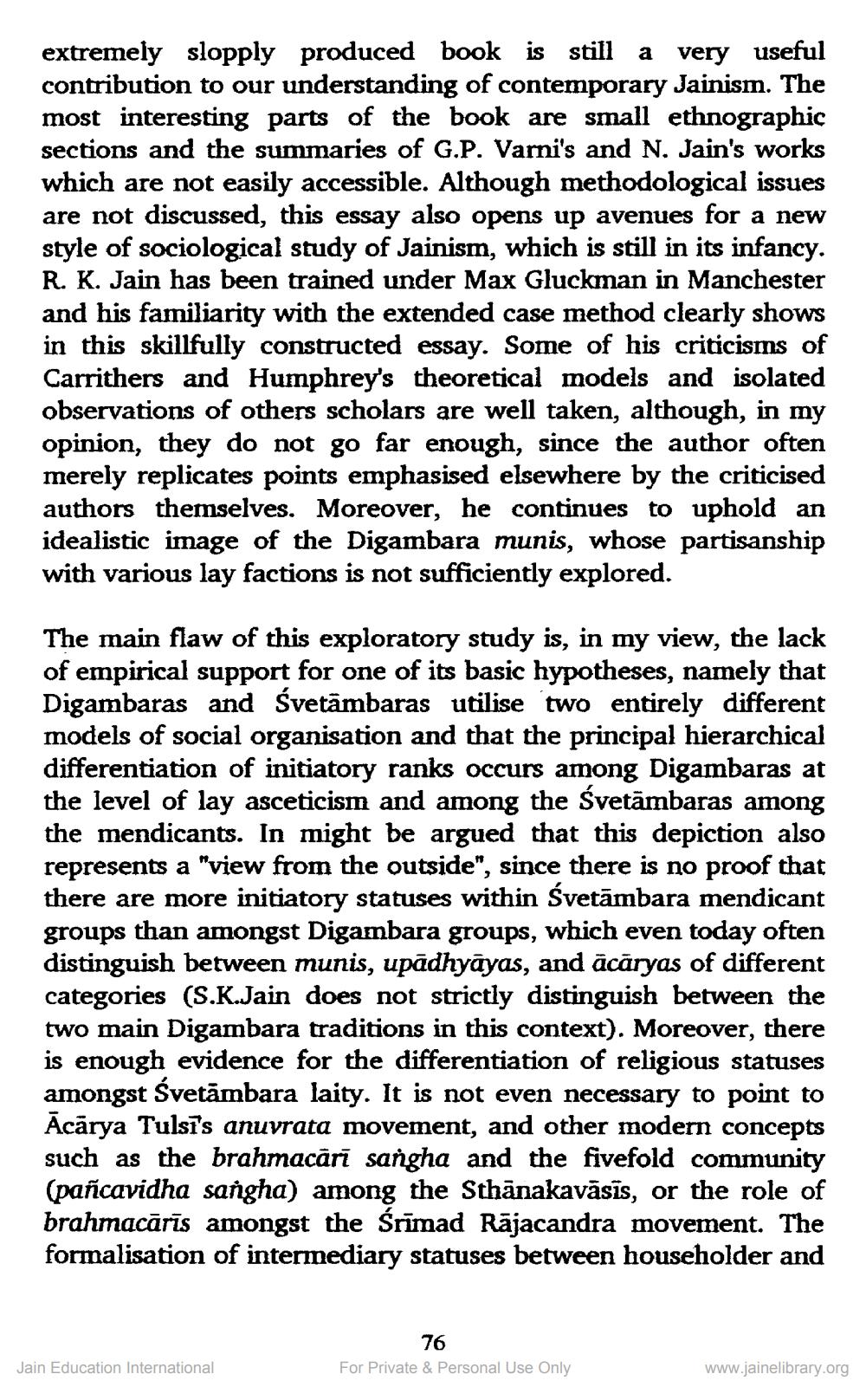________________
extremely slopply produced book is still a very useful contribution to our understanding of contemporary Jainism. The most interesting parts of the book are small ethnographic sections and the summaries of G.P. Varni's and N. Jain's works which are not easily accessible. Although methodological issues are not discussed, this essay also opens up avenues for a new style of sociological study of Jainism, which is still in its infancy. R. K. Jain has been trained under Max Gluckman in Manchester and his familiarity with the extended case method clearly shows in this skillfully constructed essay. Some of his criticisms of Carrithers and Humphrey's theoretical models and isolated observations of others scholars are well taken, although, in my opinion, they do not go far enough, since the author often merely replicates points emphasised elsewhere by the criticised authors themselves. Moreover, he continues to uphold an idealistic image of the Digambara munis, whose partisanship with various lay factions is not sufficiently explored.
The main flaw of this exploratory study is, in my view, the lack of empirical support for one of its basic hypotheses, namely that Digambaras and svetambaras utilise two entirely different models of social organisation and that the principal hierarchical differentiation of initiatory ranks occurs among Digambaras at the level of lay asceticism and among the Svetāmbaras among the mendicants. In might be argued that this depiction also represents a "view from the outside", since there is no proof that there are more initiatory statuses within Svetāmbara mendicant groups than amongst Digambara groups, which even today often distinguish between munis, upādhyāyas, and ācāryas of different categories (S.K.Jain does not strictly distinguish between the two main Digambara traditions in this context). Moreover, there is enough evidence for the differentiation of religious statuses amongst Svetāmbara laity. It is not even necessary to point to Ācārya Tulsi's anuvrata movement, and other modern concepts such as the brahmacārī sangha and the fivefold community (pañcavidha sangha) among the Sthānakavāsīs, or the role of brahmacārīs amongst the Srimad Rājacandra movement. The formalisation of intermediary statuses between householder and
76 For Private & Personal Use Only
Jain Education International
www.jainelibrary.org




